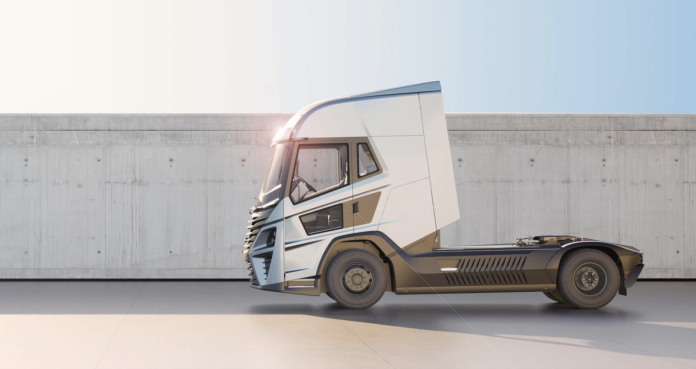Hydrogen Vehicle Systems (HVS), a zero-emission, hydrogen-powered commercial vehicle innovator, has introduced its modular platform, which provides Heavy Goods Vehicle (HGV) operators with maximum flexibility from a single base vehicle.
The tractor unit will be offered with two types of e-axles, one medium power and one high power, as well as up to three hydrogen tanks, depending on the customer’s range needs.
Furthermore, depending on the customer’s payload and mission needs, the hydrogen fuel cell powertrain can be chosen with two distinct power outputs.
The modular platform is based on a set wheelbase, thus the vehicle’s footprint remains constant regardless of specification.
According to a statement, HVS’ ground-up designed vehicles have been specifically developed to maximise driver comfort while the platform is purpose-built around the hydrogen powertrain
The vehicle is designed with a suspended cab in front and a fixed tower in the back that houses the thermal and powertrain systems.
This platform format breaks from the industry’s normal practice of varying cab types and sizes – such as big, medium, and small, as well as high/low-roof – and ensures that even the smallest versions have the same capacious cab as the largest ones.
“We’re offering maximum modularity within a single base vehicle platform, and we would never have been able to achieve this level of flexibility and optimisation with a diesel-powertrain derived vehicle design,” stated Pete Clarke, head of Design at HVS.
He further added, “Our vehicles have been created for a fundamentally different technology within an all-new package, so every cubic millimetre has been designed afresh. We initially calculated the maximum wheelbase possible to achieve the required turning circle and manoeuvrability for the target market. The design process then began with the optimal powertrain format, around which the vehicle design was then created – ensuring that form followed function.”
HVS is working on new hydrogen drivetrains for future vehicles, with the goal of offering maximum power and range for each operating duty class. With this modular design, HVS delivers the finest possible technology, resulting in a very competitive, zero-emission range of up to 370 miles/600 kilometres.
This enables operators to move to a zero-emission fleet as soon as feasible by providing low-risk and low-cost early learning opportunities. Because the modular platform is interchangeable, more advanced modules can be added as the market penetration of hydrogen HGVs grows and technology matures, benefiting from economies of scale, while early adopters will benefit from the knowledge, experience, and market profile of operating hydrogen HGVs.







